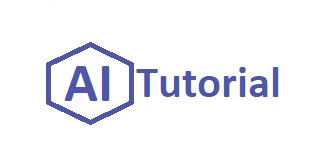🧠 Types of AI Agents
AI agents vary in complexity, with each type designed for different goals and environments. From the simplest to the most advanced, here are the five main types:
- 1️⃣ Simple Reflex Agents: Act based only on current percepts. No memory or learning.
- 2️⃣ Model-Based Reflex Agents: Use internal memory of past states to handle partially observable environments.
- 3️⃣ Goal-Based Agents: Plan actions to achieve specific goals instead of reacting reflexively.
- 4️⃣ Utility-Based Agents: Consider multiple outcomes and choose actions based on utility or preferences.
- 5️⃣ Learning Agents: Improve over time by learning from experience, adjusting strategies based on outcomes.
⚙️ Simple Reflex Agents
🔹 Core Characteristics
- Actions are based solely on the agent’s current perception (no memory).
- Operate using predefined condition-action rules (e.g., “If X, then do Y”).
- Do not adapt or interact with other agents.
- Work only in fully observable environments.
⚠️ Limitations
- Cannot handle scenarios not explicitly programmed.
- Ineffective in complex or changing environments.
💡 Example
Thermostat: A thermostat that turns on the heating system at 8 PM every night.
Rule: If the time is 8 PM, then activate the heating system.
🧠 Model-Based Reflex Agents
🔹 Core Characteristics
- Actions are based on both current perception and an internal model of the world.
- Maintain internal memory to track partially observable environments.
- Use condition-action rules that reference this internal state.
- Can infer hidden parts of the environment using past data.
⚠️ Limitations
- Effectiveness depends on the accuracy of the internal model.
- More complex to design and maintain than simple reflex agents.
- Model inaccuracies can result in incorrect actions.
💡 Example
Robot Vacuum Cleaner: Remembers where it has already cleaned.
Rule: If dirt was detected earlier in an area and now no dirt is sensed, update model and move to the next area.
🎯 Goal-Based Agents
🔹 Core Characteristics
- Have an internal model of the world to understand the environment.
- Operate based on a goal or set of goals that define desired outcomes.
- Search and plan for action sequences that help achieve the specified goal before acting.
- Can evaluate multiple potential paths and select the most efficient or effective one.
- Offer improved effectiveness compared to simple reflex agents and model-based reflex agents.
⚠️ Limitations
- Goal-based reasoning can be computationally expensive due to search and planning requirements.
- Agents can struggle when goals conflict or when goals are poorly defined.
- Require accurate and updated internal models for effective decision-making.
💡 Example
Self-Driving Car: Plans a route to a destination based on current traffic conditions.
Goal: Safely and efficiently reach the destination.
Action: Select and follow the optimal route considering traffic, roadblocks, and weather conditions.
📊 Utility-Based Agents
🔹 Core Characteristics
- Select action sequences that both achieve the goal and maximize utility or reward.
- Use a utility function to calculate the usefulness or desirability of outcomes.
- Assign utility values based on criteria such as:
- ✔️ Progress toward the goal
- ⏱️ Time requirements
- 💻 Computational complexity
- 💰 Cost, ⚙️ efficiency, and other task-specific factors
- Choose the action with the highest expected utility.
- Can balance trade-offs (e.g., speed vs. quality).
⚠️ Limitations
- Utility functions are difficult to define and require deep domain understanding.
- High computational cost to evaluate all action options and scenarios.
- Suboptimal results may occur if the utility model is incomplete or inaccurate.
💡 Example
AI Shopping Assistant: Helps users find and choose products.
Action: Evaluates each item based on cost, delivery speed, and user reviews, then selects the product with the highest overall utility.
🧠 Learning Agents
🔹 Core Characteristics
- Integrate features of reflex, model-based, goal-based, and utility-based agents with learning capabilities.
- Autonomously improve by learning from new experiences.
- Adapt to unfamiliar environments and enhance performance over time.
- Use utility or goal-based reasoning as needed.
- Consist of four core components:
- 🧠 Learning: Learns from percepts and inputs.
- 🧪 Critic: Evaluates outcomes and provides feedback.
- ⚙️ Performance Element: Chooses actions based on current knowledge.
- 💡 Problem Generator: Suggests new actions to improve learning.
💡 Example
Personalized E-Commerce Recommendations:
- Learning: Tracks browsing behavior and purchase history.
- Critic: Analyzes clicks, conversions, and ratings.
- Performance: Recommends products based on user preferences.
- Problem Generator: Experiments with new product categories or layouts.
Cycle: Continuously improves recommendations by learning from user feedback.
